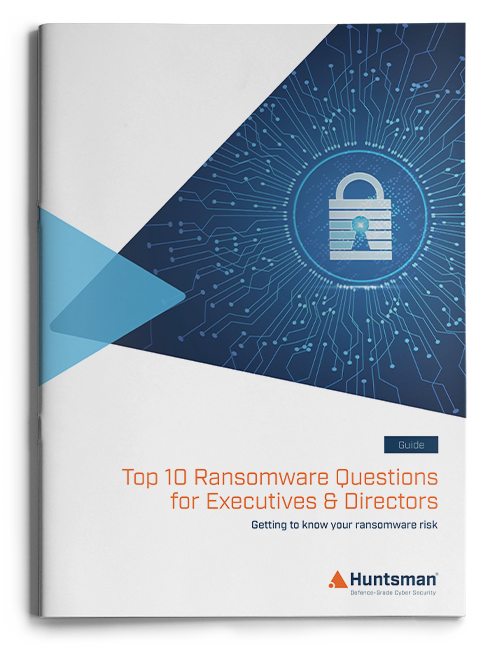Patient information at risk
After the ransomware attack on the Waikato District Health Board (DHB) in May 2021 the New Zealand Privacy Commissioner John Edwards, warned all 20 NZ DHBs that if any DHB was found to not have adequate security (to protect patients’ information), compliance notices may be issued under the Privacy Act 2020; and if necessary, prosecutions would follow [1].
Clearly the time has come for boards and executive teams in New Zealand’s DHBs to be ransomware ready. Concerns were raised in Australia too, when the Office of the Australian Information Commissioner’s (OAIC) Notifiable Data Breach Report for Jan-Jun 2021 confirmed that the health care sector was most vulnerable to ransomware attack. [2]
The cyber hygiene of healthcare
Meanwhile, in this climate of growing attacks globally, PwC observed that less than 50% of health sector CISOs were likely to increase their cyber budgets in 2021. Almost 75% of those executives surveyed believed they would still be able to improve their levels of cyber posture through cost containment and judicious spending[3].
According to the OAIC, in Australia, ransomware was up 24% since the last reporting period. Recent local health care attacks in both Australia and New Zealand are a wakeup call for boards and executive teams. It’s time to take cyber security and resilience very seriously. Despite the optimism of those surveyed by PwC[4], in an industry notorious for systems vulnerabilities and cyber security under-investment, it is imperative that health care organisations embrace a stronger cyber culture and seek expert advice to tighten their cyber security controls.
The recent IBM Cost of Data Breach Report 2021[5] confirmed that, for the 11th year in a row, the healthcare sector had the highest average cost of a data breach. This year, US$9.23m per breach and that excludes the lives potentially put at risk as a consequence of an attack.
Patient welfare is at risk
In Brisbane, a ransomware attack on UnitingCare’s internal IT systems forced its hospitals and nursing homes to resort to manual back up processes. While in Waikato, the ransomware outage affected all clinical services across all 5 regional hospitals. Patient appointments and surgeries were severely impacted, causing large backlogs for these important services.
The loss of modern diagnostic capability, and the speed of computer communication, meant it took twice as long to treat urgent patients. Having to resort to manual back-up systems caused major stresses for both patients and staff. The loss of radiology services severely impacted a number of seriously ill cancer patients who had to be transferred to other North Island hospitals. The then medical director of the Cancer Society of New Zealand stated that “it’s hard to understate how disruptive the loss of an IT system is on a hospital”[6].
In NZ, the government’s refusal to pay the ransom resulted in sensitive patient data being released to the media with some patient data permanently lost. IT systems took more than 4 weeks to fully recover.
The impacts of a ransomware attack on health care facilities cannot be underestimated. Financial losses, reputational damage, loss of productivity and business continuity and the risk of potential legal liabilities emerging as a result of interrupted patient health care. The disruption and loss of technology in a clinical setting can impact patient outcomes and potentially cost lives.
So too is their loss of identity
As if the loss of medical services isn’t enough for healthcare victims of cyber attacks. The potential theft of patients’ sensitive medical information and accompanying personally identifiable information adds insult to injury. Stolen information can include research data, patient records, billing information, insurance claims and social security numbers (a full set of identity records); all of which is highly prized on the dark web.
The hidden costs of the digital transformation of health care
These costs to healthcare victims can be overwhelming, particularly at a time in their lives when many are at their most vulnerable. It’s for this reason that we need to identify and resolve some of the factors that make the sector so attractive to attackers:
- E-health care records now connect patients’ healthcare providers to their medical treatment thereby introducing 3rd party cyber risks as well as significantly increasing the attack surface-area;
- A review of cyber security budgets of healthcare organisations shows significant under-investment despite the ongoing prioritisation of new technologies, resulting in increasing cyber security deficits[7];
- Add to this; more than 22% of healthcare organisations continue to use legacy and end-of-life systems without vendor support and a further 26% which are unaware of any support.[8]
Essential cyber hygiene
Fortunately, these drivers of cyber attack in the healthcare sector point to some possible solutions to this scourge. There are, for example, a number of cost-effective mitigation strategies or controls that can be relatively simply initiated across healthcare organisations to improve their cyber security maturity and as a result, reduce their risk of cyber attack.
As noted above, accountabilities are strengthening so boards and senior executives need a clear picture of their cyber security posture. Active security risk management processes that regularly measure and inform management of the state of their cyber controls are increasingly being expected by regulators everywhere.
Rapid diagnostics and remediation
Being able to monitor and assess your cyber risk against a simple set of cyber security KPIs, like the Australian Cyber Security Centre Essential Eight framework, need not be costly, but it can ensure that your organisation stays on top of its cyber security to maintain effective oversight.
The good news is that highly effective automated technologies are now available to instantly measure and enable you to manage the health of your key security controls. Huntsman Security’s Essential Eight solutions can quickly measure and clearly report cyber security posture to relevant stakeholders.
With a clear picture of the state of its prevention, containment and recovery strategies the board can regularly assess and address any shortcomings that may expose the organisation or its patients to poor cyber security outcomes.
[1] https://www.privacy.org.nz/publications/statements-media-releases/privacy-commissioner-calls-on-dhbs-to-address-it-vulnerabilities/ ; May 26 2021
[2] https://www.oaic.gov.au/__data/assets/pdf_file/0013/2803/oaic-notifiable-data-breaches-report-jan-june-2021.pdf
[3] https://www.pwc.com/us/en/services/consulting/cybersecurity-privacy-forensics/library/global-digital-trust-insights/sector-analysis.html#health
[4] Ibid
[5] https://www.ibm.com/au-en/security/data-breach
[6] https://www.rnz.co.nz/news/national/443451/waikato-dhb-cyber-attack-doctors-walking-through-fog
[7] https://www.brookings.edu/blog/techtank/2021/08/09/why-hospitals-and-healthcare-organizations-need-to-take-cybersecurity-more-seriously/
[8] https://www.pwc.com.au/digitalpulse/ransomware-attack-health-sector.html
 About Huntsman
About Huntsman


